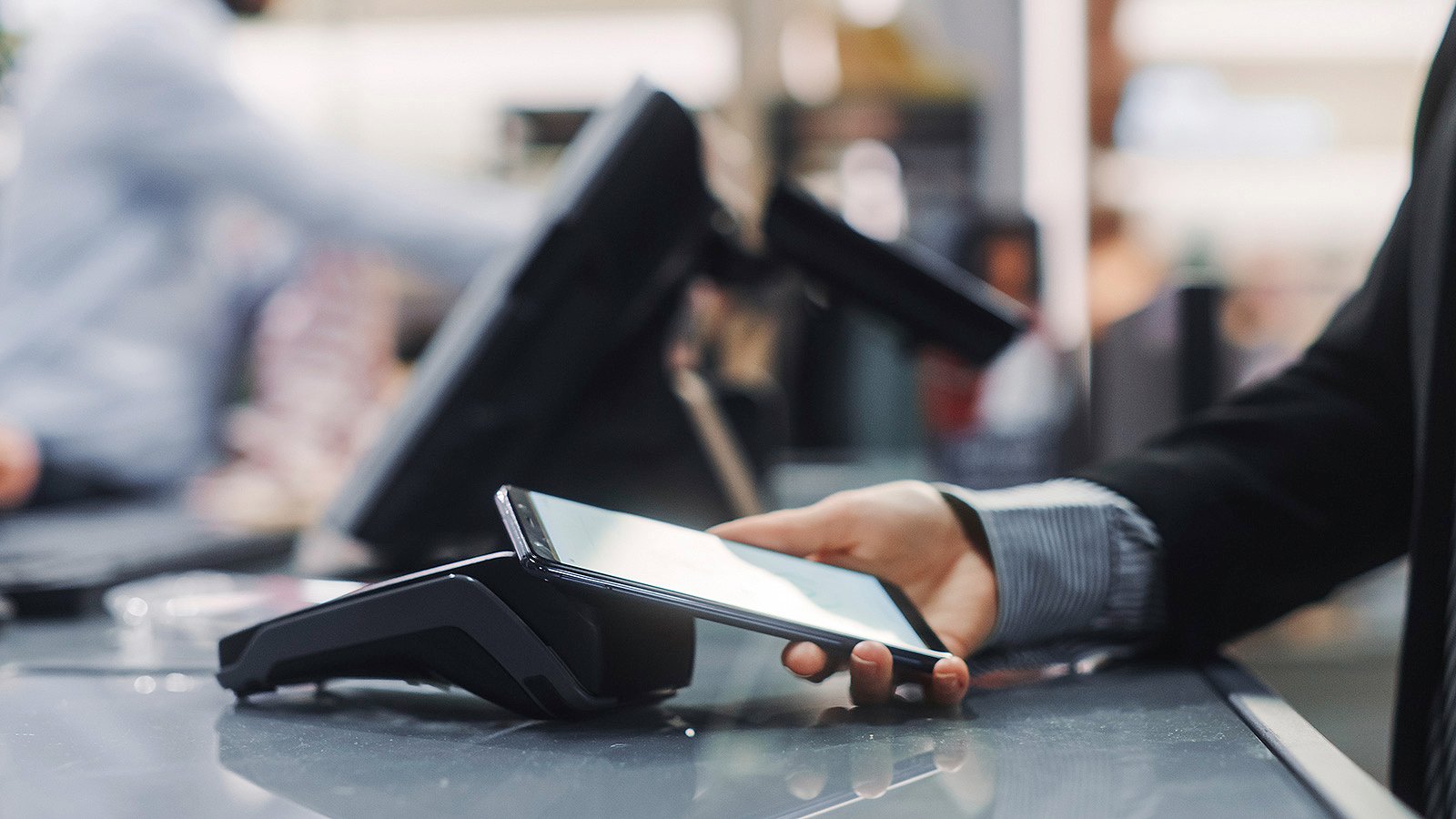
Consumers today expect a seamless, personalized shopping experience wherever they choose to engage, regardless of the engagement channel. But how does a retailer build the frictionless, connected, omnichannel experience its customers expect?
It begins and ends with the one common denominator across all touchpoints: the customers themselves.
Retailers at the forefront of this idea are investing in four key areas:
- Perfecting the phygital
- Modernizing the retail storefront
- Making data-driven strategies
- Elevating the employee experience
Perfecting the phygital
For years, retailers have focused on using their digital presence to enhance their physical one, while consumers have increasingly turned to digital first. However, physical retail has seen a recent resurgence thanks to the inherently social aspect of in-person shopping.
Even at the height of the pandemic, e-commerce made up just 19% of retail sales in April 2020. Since then, it’s fallen to 15%. Today, 80% of all shopping still happens in-store.1 This tells us that customers aren’t looking for digital to replace physical—they’re looking for the two to work together and co-exist.
To be successful going forward, retailers must combine the physical and digital aspects of their businesses and embrace the “phygital.”
To be successful going forward, retailers must combine the physical and digital aspects of their businesses and embrace the “phygital.”
What does perfecting the phygital look like?
The phygital is when a customer makes a list of needed items for a home project before they ever get to the store, then have their app direct them to the exact location in-store.
It’s adding items to a cart from home to check out in-store or scanning an item in the store to have a different size shipped home later.
It also can mean helping shoppers find the right fit. After all, for major retailers like H&M, roughly half of all returns are based on size and fit.2
Enter the virtual try-on: companies like Fit:Match, Forma, and True Fit are bringing digital dressing rooms to the masses with augmented reality and unique avatars sized to customer-submitted pictures or full-body scans.
Forma claims that simply adding their digital dressing room widget to a retailer’s website increases overall sitewide conversion by as much as 50%, and that shoppers who use the widget are 10-20 times more likely to buy.3
When considering your phygital strategy, look at how all aspects of your enterprise can work together. For example:
- Is your online inventory easily accessible by in-store associates?
- Can an online shopper see if an item they want is already at a nearby store?
- Are returns the same experience, regardless of whether the item was purchased online or in-store?
A true phygital enterprise will have inventory data accessible to associate and shopper alike, updating in real-time to reflect the current locations and shipping times for all items.
A true phygital enterprise will have inventory data accessible to associate and shopper alike, updating in real-time to reflect the current locations and shipping times for all items.
Modernizing the retail storefront
Delivering a unique and hyper-personalized shopping experience is key to treating the customer as the channel. Enabling that experience depends on technology.
Solutions like dynamic digital signage, cashierless checkout, and contactless returns rely on IoT devices, advanced networking, and mobile platforms. Investing in these systems enables retailers to merge digital data sources with in-store data sources to create holistic shopper profiles. When a shopper enters a store, retailers then can leverage the profiles to personalize their experiences.
Consider the L’Oréal Paris concept store in Shanghai. Shoppers can take a digital bike ride through Paris to earn discounts. They can watch influencers film new content from the in-store studio. They can get skin analysis reports, complete with a key to scan at touchpoints throughout the store and unlock personalized product recommendations. Shoppers can purchase on-site for shipping anywhere in China, or add to a digital shopping cart and complete the purchase later online or via WeChat.4
These interactive in-store experiences can only happen if all data sources are integrated, from CRM to inventory to delivery drivers dropping off orders. De-siloing data is only the beginning. These systems require investment in a fast network with strong connectivity and expansive coverage.
Retailers looking to modernize their retail storefronts should focus on improving data practices. For instance, empower associates from the warehouse to the storefront with access to data from across the enterprise.
Building data-driven strategies
Retail businesses generate terabytes of data every day. Capturing and cataloging it all can ultimately enable innovations to be deployed at scale, using insights derived from the data to make better recommendations, find unseen weaknesses, and create more optimized ways of working.
Retailers need a central repository for the transactional data and performance metrics collected across all touchpoints, such as a de-siloed CRM and ERP system with advanced capabilities. The ability to view and analyze this information proves vital in helping retailers adapt to evolving shopping trends and consumer attributes.
WOW Concept in Madrid is a store at the forefront of the new phygital experience. It primarily offers a highly engaging physical space to feature a rotating roster of digitally-native brands, but its value is in how it uses data to merge the physical and digital into a self-reinforcing cycle.
Customers start their shopping trip on the app, selecting items they’d like to evaluate in-person or pick up in the store. Upon entering the store, the app changes to guide them through the space. Shoppers scan codes on shelves to learn more, order online, and have the goods shipped home. Inventory is updated live across online and in-store touchpoints. WOW curators decide on the next round of retailers based on who moves product and builds hype online.
WOW’s approach works because it’s a self-reinforcing cycle built on data: digital trends shape the physical experience and physical shopping behaviors guide future developments. Businesses that have already done the work of data governance are well-positioned to follow suit; those that have yet to begin the process would find it hard to replicate the WOW model.
With good governance and in-depth consumer behavior data delivered by the phygital model, at-home shopping can transition seamlessly into the store (and vice versa). Data gathered from online behavior can customize in-store shopping, while dynamic in-store signage can be scanned by customers to order a desired item in another size, model, or color online.
Elevating the retail employee experience
Every company, retail or otherwise, lives and dies by its workforce. Gallup's 2022 State of the Global Workplace report showed employees who are not engaged or are actively disengaged cost the global economy a staggering $7.8 trillion in lost productivity—11% of the global GDP.5
Today’s consumers consistently state a need for more information from retail workers. Twenty-seven percent express a desire to speak to more informed and knowledgeable store associates.6 Give employees the tools, procedures, and policies they need to solve customers’ issues and answer their questions in the moment, regardless of procedure or whether they’re in-store or online. Providing more information isn’t just a customer service issue—it’s a profitability issue.
The phygital, customer-centric model helps here, too. With once-disparate offline and online data sources pooled together and made accessible to all levels of an organization, employees can respond to customer needs as they arise. Associates can look up products not immediately available to the customer, see exactly where they are in your supply chain, and reroute them to local storefronts for easy pickup.
Retailers leading the way are making sure in-store devices are updated real-time with current inventory, shipping, and logistics information and available to all associates. With the ability to see data across your supply chain and the authority to act on it, associates can meet customer expectations and have outsized positive impact with simple choices. And happier customers mean happier frontline employees.
Centering the customer as the channel
There are four areas that retailers can invest in to center the customer as the channel:
- Merging the physical and digital into a connected phygital experience
- Updating the storefront to accommodate current shopping behaviors
- Building a strategy on a foundation of good data
- Empowering employees to act in the customer’s best interest
Retailers can better focus on the one touchpoint that’s common across every single channel: the customers themselves. And in a world with exponentially more touchpoints than ever before, the customer is truly the only channel that matters.
1 State of Retail, NRF.com, March 2023
2 16 ideas worth stealing for 2022, NRF.com, March 2022
3 Virtual fit’s role in retail’s recovery, NRF.com, August 2020
4 16 ideas worth stealing for 2022, NRF.com, March 2022
5 The World's $7.8 Trillion Workplace Problem, Gallup, June 2022
6 Consumers want it all, NRF.com, Jan 2022



